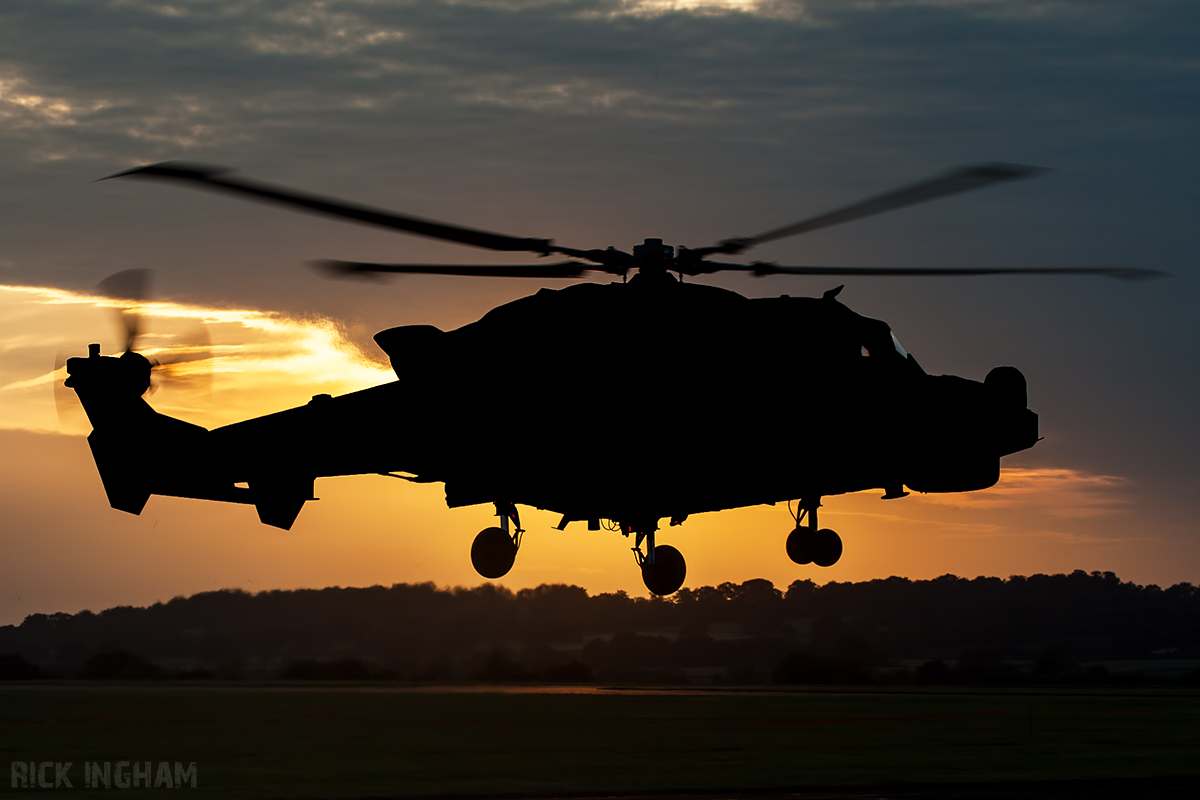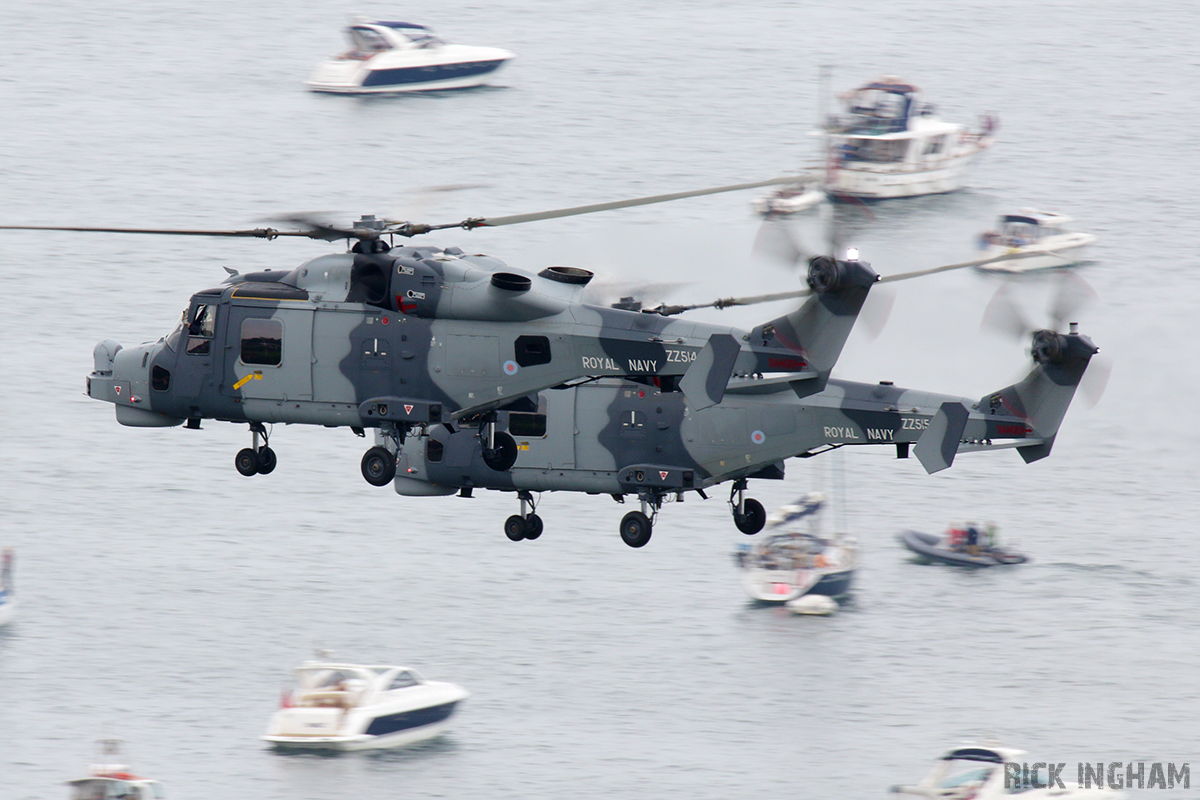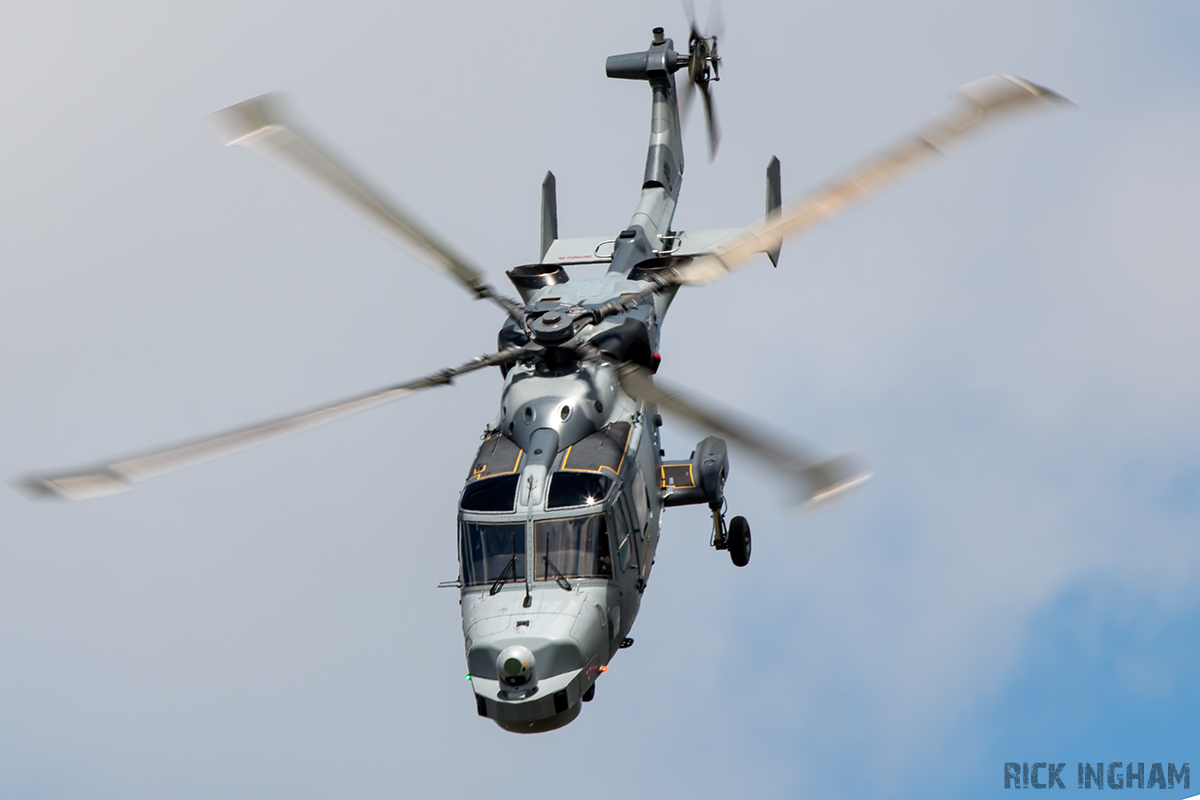The programme proposed providing the British Army with 40 and Royal Navy with 30 aircraft with an option for a further 10, split equally.
In December 2008 however, the MoD announced that the order would be reduced to 62 airframes.
It was in April 2009 the 'Future Lynx' was renamed the AW159
Lynx Wildcat and in November that year the first example made it's maiden flight.
Wildcat Serials for the British Army and Royal Navy:
ZZ349, ZZ350, ZZ351, ZZ352, ZZ353, ZZ354, ZZ355, ZZ356, ZZ357, ZZ358, ZZ359, ZZ360, ZZ361, ZZ362, ZZ363, ZZ364, ZZ365, ZZ366, ZZ367, ZZ368, ZZ369, ZZ370, ZZ370, ZZ371, ZZ372, ZZ373, ZZ374, ZZ375, ZZ376, ZZ377, ZZ378, ZZ379, ZZ380, ZZ381, ZZ382, ZZ383, ZZ384, ZZ385, ZZ386, ZZ387, ZZ388, ZZ389, ZZ390, ZZ390, ZZ391, ZZ392, ZZ393, ZZ394, ZZ395, ZZ396, ZZ397, ZZ398, ZZ399, ZZ400, ZZ401, ZZ402, ZZ403, ZZ404, ZZ405, ZZ406, ZZ407, ZZ408, ZZ409,ZZ410,ZZ411, ZZ412, ZZ413, ZZ414, ZZ415
| Weights | ||||
|---|---|---|---|---|
| Max take Off | 6000 | kg | 13228 | lb |
| Engine Rating (2 x LHTEC CTS800-4N) | ||||
|---|---|---|---|---|
| Take Off | 1015 | kW | 1362 | shp |
| Fuel Capacity | ||||
|---|---|---|---|---|
| Standard | 940 | l | 207 | USgal |
| Crew | |
|---|---|
| Pilot/ Passengers | 2/7 |
| External Dimensions | ||||
|---|---|---|---|---|
| Length (rotors turning) | 15.22 | m | 49.9 | ft |
| Overall height | 3.73 | m | 12.2 | ft |
| Main rotor diameter | 12.80 | m | 41.9 | ft |
| Performance (At MTOW - ISA) | ||||
|---|---|---|---|---|
| Max speed | 291 | km/h | 157 | kts |
| Hovering IGE | 3050 | m | 10000 | ft |
| Hovering OGE | 1580 | m | 5200 | ft |
| Max Range (incl. aux fuel) | 963 | km | 520 | nm |
| Max endurance (incl. aux fuel) | 4 h 30 mins | |||
Key Features
- Crashworthy Seating
- Modular Armour
- Rescue hoist (fixed or deployable)
- Troop seats and medevac stretchers
- Rappelling/ fast roping kit
- Armoured crew seats and armoured floor
- Harpoon decklock
- Wire strike protection system
- IR Suppression system
The Wildcat sees a massive jump in Avionics technology from the Lynx.
The AW159 is supported by Health and usage monitoring systems (HUMS) which monitors the helicopter's components and can even record the data to be used for maintenance and to pin point problems quickly and accurately. The aircraft also comes with a Forward Looking Infra-Red system, Electronic Support Measures system, Infrared Suppression System and 360˚ AESA Surveillance radar. The AW159 eases the workload on the crew in the battlefield with it's Integrated surface Automatic Identification System (AIS) along with a Tactical Data Link and Digital Map so a number of units are all seeing up to date information immediatly. The Multi-Function Display also contains a comprehensive weapon management system which links up to the Wildcat's Head-up display.
The Wildcat can also use a ASW Active Dipping Sonar for Maritime taskings.
The Wildcat will enter service with the British Army in 2014 and Royal Navy in 2015. To help impliment the aircraft into service the British Army has formed the Wildcat Fielding Team and the Navy 700(W) NAS both at RNAS Yeovilton.
700 Naval Air Squadron is an Operational Evaluation Unit (OEU) to support Intense flying trials. The 'W' Suffix after the 700 stands for the Wildcat.
- 1957 - 700H NAS (Westland Whirlwind HAS.7)
- 1957-1958 - 700X NAS - (Supermarine Scimitar F.1)
- 1958-1959 - 700Y NAS - (de Havilland Sea Vixen FAW.1)
- 1959-1961 - 700X NAS (reformed) - (Saunders-Roe P.531)
- 1960 - 700H NAS (Westland Wessex HAS.1)
- 1961-1963 - 700Z NAS (Blackburn Buccaneer S.1)
- 1963-1964 - 700W NAS (Westland Wasp HAS.1)
- 1963-1964 - 700V NAS (Westland Wessex HU.5)
- 1965 - 700B NAS - (Blackburn Buccaneer S.2)
- 1967 - 700H NAS (reformed) (Westland Wessex HAS.3)
- 1968-1969 - 700P NAS (McDonnell Douglas Phantom FG.1)
- 1969-1970 - 700S NAS (Westland Sea King HAS.1)
- 1976-1977 - 700L NAS (Westland Lynx HAS.2)
- 1979-1980 - 700A NAS (British Aerospace Sea Harrier FRS.1)
- 1990-1992 - 700L NAS (reformed) (Westland Lynx CTS Trials)
- 1998-2008 - 700M NAS (AgustaWestland Merlin HM.1)
- 2009- - 700W NAS (AgustaWestland Wildcat)
















